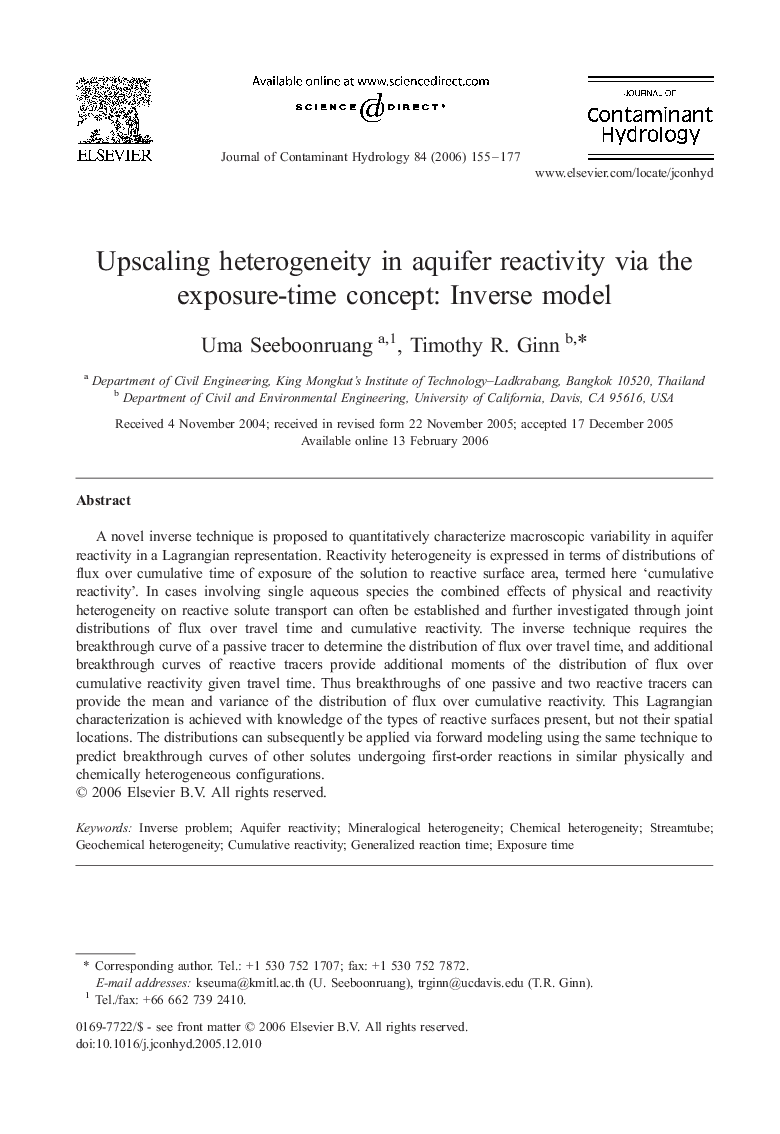| Article ID | Journal | Published Year | Pages | File Type |
|---|---|---|---|---|
| 4547691 | Journal of Contaminant Hydrology | 2006 | 23 Pages |
A novel inverse technique is proposed to quantitatively characterize macroscopic variability in aquifer reactivity in a Lagrangian representation. Reactivity heterogeneity is expressed in terms of distributions of flux over cumulative time of exposure of the solution to reactive surface area, termed here ‘cumulative reactivity’. In cases involving single aqueous species the combined effects of physical and reactivity heterogeneity on reactive solute transport can often be established and further investigated through joint distributions of flux over travel time and cumulative reactivity. The inverse technique requires the breakthrough curve of a passive tracer to determine the distribution of flux over travel time, and additional breakthrough curves of reactive tracers provide additional moments of the distribution of flux over cumulative reactivity given travel time. Thus breakthroughs of one passive and two reactive tracers can provide the mean and variance of the distribution of flux over cumulative reactivity. This Lagrangian characterization is achieved with knowledge of the types of reactive surfaces present, but not their spatial locations. The distributions can subsequently be applied via forward modeling using the same technique to predict breakthrough curves of other solutes undergoing first-order reactions in similar physically and chemically heterogeneous configurations.
